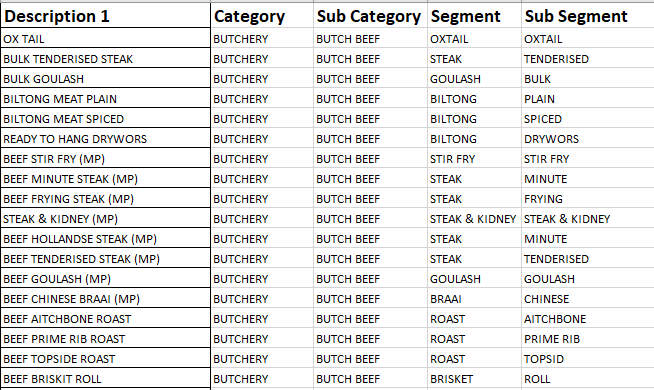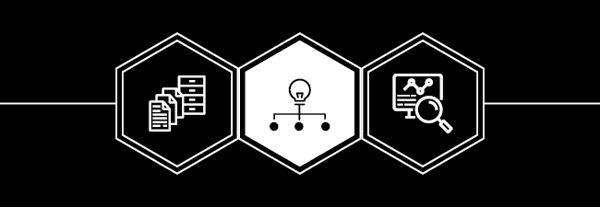An accurate product classification goes a long way to helping you to please any shopper who walks into your store. You could even argue that it’s the foundation for long-term success. By presenting your products correctly, you’re offering a pleasant shopping experience. That encourages shoppers to return, allowing you to foster a reputation as the retailer of choice for a particular range of products.
What is product classification [and why is it necessary]?
Before we get into what you need to consider to allow you to classify your products correctly, it’s worth first looking at the definition of product classification as well as why there is value in completing such an exercise.
Fortunately, it’s relatively straightforward to understand:
Product classification refers to the organisation of products (be they goods or services) based on either a specific characteristic or a set of features. These attributes are usually decided upon by you, the retailer and you can view them as a product hierarchy.
Here’s a typical product classification or hierarchy for Butchery, which is a routine category - shopped on a regular basis.

Within this category, you might list Beef, Pork, and Chicken as your different sub-categories. You would then split each into segments such as Steak and Mince for your Beef sub-category, Sausage and Ribs for Pork and so on. Then underneath that is your sub-segment, where you could include more specific details that allow you to differentiate between each of your products.
You could go even further, depending on your approach, the product category or consumer expectations. After all, this is an exercise in understanding how your customers shop. You thus need to present any products you stock in a way that makes it easier for them to find what they want.
That said, there is also more to product classification then merely using it as a way to organise your products in-store. Classifying your products allows you to decide on which strategies you want to use to promote them. Also, by arranging your products correctly, it’ll make planogramming that much easier.

What to consider when classifying your products
As noted above, classifying your products is key to your long-term success. Fortunately, there are steps that you can take to ensure you categorise your products correctly. That’s what you’ll find below.
Of course, it’s worth noting that the below isn’t a step-by-step process that you need to follow strictly one after the other. Instead, each is an action that completing together will allow you to end up with a classification makes logical sense.
1. You need clean data
Your retail data allows you to, among other things, create category-based clusters, select and optimise product ranges, refine shelf replenishment through Days of Supply, and construct accurate planograms.
However, before you can consider doing any of the above, you need to clean your data.
If you’re unsure of what clean data looks like, or you are just interested, here are a few characteristics:
Firstly, the data set needs to include conclusive fields. That essentially means that there should be no missing data within any of your columns. Secondly, you need to ensure that there is no replicated or duplicated data. Thirdly, any words in your data must be spelt correctly. Lastly, a clean data set includes a well-classified display hierarchy.
Turn your retail data into actionable insights with DotActiv Pro or Enterprise
Of course, if you’re using software such as DotActiv to assist you with this exercise, you also need to ensure that both your market and product information is clean too. In the case of your market information that includes your Store name, Store Code, Store format and Region. And if you’re using a clustering tool, your Category Format and Category Number of Drops (NOD) must be correct too.
As for tips on clean your data, a few include: ensure all your data is captured in capital letters and refrain from using apostrophes or other punctuation marks. Also, consistency is key; if you’ve chosen a naming convention stick with it.
2. You need to decide on your merchandising display hierarchy
Just as critical as cleaning your data is the need for you to establish a merchandising display hierarchy for your products. This hierarchy or product classification must be specific to your shelf planning environment and also consider how your customer shops.
For your hierarchy, you need to decide on your departments as well as the categories therein. Once all your products have a department and you have assigned you category hierarchy levels, you can look at creating your sub-categories.
Let’s look at the product hierarchy of the Dental and Mouth Care category found at your average pharmacy retailer as an example.
Beneath the Dental and Mouth Care product grouping, your sub-categories could include Mouthwash, Toothpaste, Toothbrush, Dental Care, Interdental and so on. Then, under that would be your segments such as Medicated, Speciality and Everyday. In your sub-segments, you could find your Brand, Size and Unit of Measure (UOM).
As mentioned above, the detail of your hierarchy depends on your category and how your customer shops it. If you fail to consider how your customer shops the product grouping, the whole section could end up underperforming. That’s not because you haven’t ranged the correct products. It’s because shoppers find it challenging to shop your store, a problem faced by this retailer, which they were able to fix with help from their supplier.
On the side of detail, while its best practice to have specific data fields listed - Category, Sub-Category, Segment, and Sub-Segment - the more information you have, the better. By including as much information as possible, you’re able to understand better why certain products go next to each other and why you shouldn't place others besides one another.
More than that, it helps you with any reporting that you may do as well as any future or current ranging exercises.
3. You need to fill in your item details correctly
Above, we mentioned the importance of inserting clean market data such as your store name, code and format.
When it comes to your product information, you need the following: Barcode. Also known as your EAN or UPC, it’s and not to be confused with SKU, it’s the unique identifier that links your brand and product description to an item. You also need your Brand, Product Description, Size, Unit of Measure and Supplier.
While it’s not absolutely necessary to include an image or create a national product database for your specific retail environment, it will certainly help. That’s certainly the case if you are planogramming your category or have outsourced planogram building services to a third party. This product database allows you to store clean data and you can use it as a reference guide for cleaning and classifying your data.
In the instance of your supplier, you must ensure they offer you the proper documentation. This is especially true when they want to bring in a new line. That’s not to say that you should refuse to range their product if they haven’t provided enough details. But it will certainly make your life easier if they provide you with all the product information you need so that the product can slot in as seamlessly as possible.
4. Monitor the market and act accordingly
As much as classifying your products begins with your data, there are other factors that you need to consider. One such factor is the greater market.
Here’s why:
The category that you stock in your stores is the same category stocked in your competitor’s. And, bar a few minor differences specific to your retail environment that you might not find elsewhere, each product hierarchy should be merchandised similarly.
That’s so that any shopper who enters your store having visited your competitors previously knows what to expect. You could even argue that food categories that go together should also be merchandised together.
For example, in the average food retailer, it’s best practice to place your Butchery or Meat section nearby your Fresh Vegetable and Fruit section. Likewise, you’d stock all your Household categories nearby each other.





